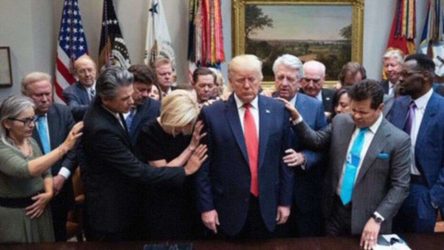 Featured – How white supremacy infected Christianity and the Republican Party. By Jennifer Rubin / Wash Post
Featured – How white supremacy infected Christianity and the Republican Party. By Jennifer Rubin / Wash Post
Robert P. Jones, chief executive and founder of the Public Religion Research Institute (PRRI), is fast becoming the leading expert in the values, votes and mind-set of White Christians. His latest book, “White Too Long: The Legacy of White Supremacy in American Christianity,” is a masterful study documenting how white supremacy came to dominate not just Southern culture, but White Christianity. In it, he argues that “most white Christian churches have protected white supremacy by dressing it in theological garb, giving it a home in a respected institution, and calibrating it to local cultural sensibilities.” Below is my conversation with Robert P. Jones, edited for style and length. Read more
Related: The White, European Jesus of Western imagination is fiction. By Michael Gerson / Wash Post
 The complex history and an uncertain future of American whiteness. By Nell Irvin Painter / NBC News
The complex history and an uncertain future of American whiteness. By Nell Irvin Painter / NBC News
A summer of protest has launched myriad conversations on Blackness in America. But whiteness also has its own history in the U.S., one that Nell Painter, author of “The History of White People,” says deserves just as much scrutiny. Watch here
Related: Why ‘White’ should be capitalized, too. By Nell Irvin Painter / Wash Post
 Trump’s History of Racism and the Reckoning It Has Forced. By Ibram X. Kendi / The Atlantic
Trump’s History of Racism and the Reckoning It Has Forced. By Ibram X. Kendi / The Atlantic
It has become harder, in the Trump years, to blame Black people for racial inequity and injustice. It has also become harder to tell Black people that the fault lies with them, and to urge them to improve their station by behaving in an upstanding or respectable manner. In the Trump years, the problem is obvious, and it isn’t Black people’s behavior. The U.S. has often been called a land of contradictions. It has been a massacring nation that said it cherished life, a slaveholding nation that claimed it valued liberty, a hierarchal nation that declared it valued equality, a disenfranchising nation that branded itself a democracy, a segregated nation that styled itself separate but equal, an excluding nation that boasted of opportunity for all. A nation is what it does, not what it originally claimed it would be. Read more
Related: America’s ‘Caste’ System: Isabel Wilkerson Says It’s More Than Racism. By Terry Gross / NPR
 How Viral Videos of Racist Incidents Are Changing Society. Erica Solano and Alexander Robson / Time
How Viral Videos of Racist Incidents Are Changing Society. Erica Solano and Alexander Robson / Time
#RECKONING, a video project from TIME, examines the cultural response to three viral videos. The footage reveals some of the many forms of racism that are part of daily life in America. The impact of these videos—along with several other clips showing racial discrimination, police brutality and violence—has helped give rise to one of the largest civil rights movements in recent history. Watch here
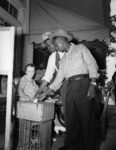 How Has the Electoral College Survived for This Long? Resistance to eliminating it has long been connected to the idea of white supremacy. By Alexander Keyssar / NYT
How Has the Electoral College Survived for This Long? Resistance to eliminating it has long been connected to the idea of white supremacy. By Alexander Keyssar / NYT
As our revived national conversation on race has made clear, the legacies of slavery and white supremacy run wide and deep in American society and political life. One such legacy — which is particularly noteworthy in a presidential election season — has been the survival and preservation of the Electoral College, an institution that has been under fire for more than 200 years. Read more
Related: Trump Can Lean on the Electoral College to Win in 2020. By Jamelle Bouie / NYT
 Black Lives Matter in Small Towns, Too. By Amanda Solliday / The Progressive
Black Lives Matter in Small Towns, Too. By Amanda Solliday / The Progressive
In Taylorville, a mostly white town in Illinois, a BLM protest highlights how the movement is making an impact in unlikely locations. The Taylorville protest was so large, and in such a seemingly unlikely location, that footage of the march was featured on CNN as evidence that the Black Lives Matter movement was reaching new corners of America. Read more
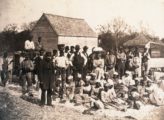 Enslaved people’s health was ignored from the country’s beginning, laying the groundwork for today’s health disparities. By Eric Kyere / The Conversation
Enslaved people’s health was ignored from the country’s beginning, laying the groundwork for today’s health disparities. By Eric Kyere / The Conversation
Some critics of Black Lives Matter say the movement itself is racist. Their frequent counterargument: All lives matter. Lost in that view, however, is a historical perspective. Look back to the late 18th century, to the very beginnings of the U.S., and you will see Black lives in this country did not seem to matter at all. Foremost among the unrelenting cruelties heaped upon enslaved people was the lack of health care for them. Read more
 The American dream while Black: Locked in a vicious cycle. Homeownership is supposed to be the gateway to the American dream. Black Americans have been denied access. By Nigel Chiwaya and Janell Ross / NBC News
The American dream while Black: Locked in a vicious cycle. Homeownership is supposed to be the gateway to the American dream. Black Americans have been denied access. By Nigel Chiwaya and Janell Ross / NBC News
Advocates, scholars and officials say one of the clearest examples of ongoing discrimination exists in the housing market, where the gap in homeownership rates between Black and white Americans is wider than it was before the Civil Rights movement. Seventy-six percent of white households owned their homes at the end of the second quarter of 2020, compared to just 47 percent of Black households, according to the Census Bureau. That 29-percentage-point gap, perpetuated by decades of housing and economic policies favorable toward white buyers and designed to exclude Black buyers, has only been exacerbated by the pandemic and before it the 2008 financial crisis. Homeownership is the prime driver of America’s ongoing wealth gap. Read more
 Black-owned companies are shutting down twice as fast as other businesses. By Chauncey Alcorn / CNN
Black-owned companies are shutting down twice as fast as other businesses. By Chauncey Alcorn / CNN
The New York Fed on Wednesday unveiled a study on the virus’ impact on business owners nationwide. The report estimates that 41% of Black-owned businesses across the country shut down between February and April, echoing the findings of a similar University of California, Santa Cruz study released in June. About 32% of Latino businesses and 26% of Asian businesses shut down over the same time span. Only about 17% of white businesses shut down during the same period, the study authors found. The authors cite lack of financial savings, less access to capital, including federal PPP loans, and funding gaps that existed prior to the pandemic as causes for the demographic disparities. Read more
 Touting Her Experience, Susan Rice Makes Her Case For Biden’s VP Slot. By Barbara Sprunt / NPR
Touting Her Experience, Susan Rice Makes Her Case For Biden’s VP Slot. By Barbara Sprunt / NPR
Former national security adviser Susan Rice told NPR she’s “honored and humbled” to be on Joe Biden’s shortlist for vice president and that her lengthy tenure in the executive branch would make her an effective No. 2. “I think I could bring my experience of almost now 20 years in the senior levels of the executive branch to bear to help tackle the most pressing problems we face,” she told Morning Edition’s Steve Inskeep in an interview that aired Tuesday. Read more
 If corporations want to stop racism, here’s where they can start. By and
If corporations want to stop racism, here’s where they can start. By and
 Distrust of the Minneapolis Police, and Also the Effort to Defund Them. By John Eligon / NYT
Distrust of the Minneapolis Police, and Also the Effort to Defund Them. By John Eligon / NYT
Reducing police department budgets drew support from 70 percent of Black Americans, according to a Gallup poll released in July. Yet only 22 percent of Black respondents supported the more drastic measure pushed by some activists of zeroing out police department budgets altogether. Read more
 ‘Life of a Klansman’ Tells Ugly Truths About America, Past and Present. By Walter Isaacson / NYT
‘Life of a Klansman’ Tells Ugly Truths About America, Past and Present. By Walter Isaacson / NYT
In his new book, “Life of a Klansman,” Edward Ball takes the reader along with him on a journey of discovery as he teases out facts, engages in speculation and shares his emotions about the sad saga of Constant Lecorgne, an unsuccessful carpenter and embittered racist who was a great-great-grandfather on his mother’s side. Read more
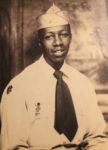 Returning From War, Returning to Racism. By Alexis Clark / NYT
Returning From War, Returning to Racism. By Alexis Clark / NYT
After fighting overseas, Black soldiers faced violence and segregation at home. Many, like Lewis W. Matthews, 93, were forced to take menial jobs. Although he managed to push through racism, that wasn’t an option for many. “At the heart of it was a kind of nervousness and fear that many whites had that returning Black veterans would upset the racial status quo,” said Charissa Threat, a history professor at Chapman University, who has written extensively on civilian-military relationships and race. “They saw images of Black soldiers coming from abroad from places like Germany and England, where Black soldiers were intermingling with whites and had a lot more freedom.” Read more
 Stokely Carmichael didn’t deserve Bill Clinton’s swipe during John Lewis’s funeral. By Hasan Kwame Jeffries / Wash Post
Stokely Carmichael didn’t deserve Bill Clinton’s swipe during John Lewis’s funeral. By Hasan Kwame Jeffries / Wash Post
Clinton’s attack was more subtle than savage. But it was still severe. “There were two or three years there where the movement went a little too far toward Stokely,” he said, “but in the end, John Lewis prevailed.” For Clinton, the movement’s problematic drift was its turn toward Black Power. Black Power was an approach to change rooted in Black political independence, economic empowerment and cultural pride that gained popularity during the late 1960s. Read more
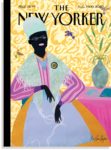 Grace Lynne Haynes’s “Sojourner Truth, Founding Mother.” By Francoise Mouly / The New Yorker
Grace Lynne Haynes’s “Sojourner Truth, Founding Mother.” By Francoise Mouly / The New Yorker
In the latest issue of The New Yorker, the artist Grace Lynne Haynes, in her début for the magazine, paints a portrait of Sojourner Truth. The image arrives on the hundredth anniversary of the ratification of the Nineteenth Amendment, which gave women the vote. Truth, who died in 1883, didn’t live to see that victory, but she spent her life fighting for women, for abolition, and for Black women, specifically, at a time when many suffragists refused to acknowledge them in the movement. Read more
 White NBA players discuss responsibility to Black teammates: ‘It’s a continuous fight.’ By Marc J. Spears / The Undefeated
White NBA players discuss responsibility to Black teammates: ‘It’s a continuous fight.’ By Marc J. Spears / The Undefeated
While Alex Caruso takes pride in wearing the popular Los Angeles Lakers name across his chest, it’s the words on the back of his jersey that he wants to talk about. Caruso, who is white, has chosen to wear “Black Lives Matter” on his jersey in Orlando, Florida, to support the fight for racial equality. “This is something that Black people can’t do on their own,” Caruso told The Undefeated. “This isn’t something where they can wake up and say, ‘You know what? I’m just grinding, being an activist and talking to so many people and it’s going to get done.’ … Read more
Visit our home page for more articles, book/podcast and video favorites. And at the top of this page register your email to receive notification of new editions of Race Inquiry Digest. Click here for earlier Digests.
Use the buttons below to share the Digest in an email, or post to your Facebook, Linkedin or Twitter accounts.